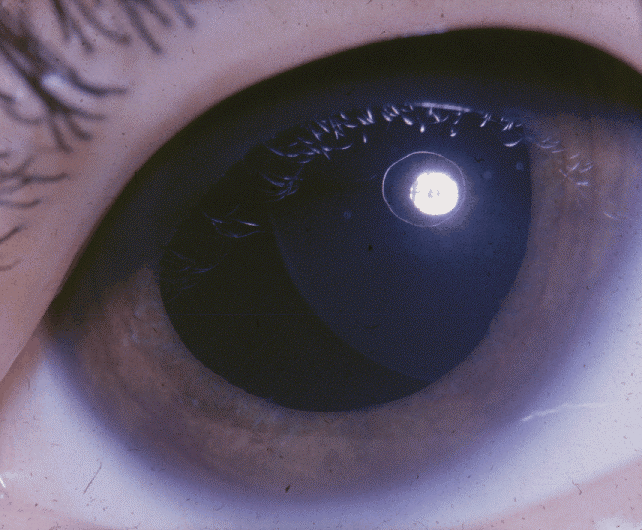Weill–Marchesani Syndrome on:
[Wikipedia]
[Google]
[Amazon]
Weill–Marchesani syndrome is a rare
 Diagnosis is made when several characteristic clinical signs are observed. There is no single test to confirm the presence of Weill–Marchesani syndrome. Exploring family history or examining other family members may prove helpful in confirming this diagnosis.
Diagnosis is made when several characteristic clinical signs are observed. There is no single test to confirm the presence of Weill–Marchesani syndrome. Exploring family history or examining other family members may prove helpful in confirming this diagnosis.
GeneReviews/NCBI/NIH/UW entry on Weill-Marchesani Syndrome
{{DEFAULTSORT:Weill-Marchesani Syndrome Cytoskeletal defects Syndromes Eye diseases Rare syndromes
genetic disorder
A genetic disorder is a health problem caused by one or more abnormalities in the genome. It can be caused by a mutation in a single gene (monogenic) or multiple genes (polygenic) or by a chromosomal abnormality. Although polygenic disorders ...
characterized by short stature; an unusually short, broad head (brachycephaly
Brachycephaly (derived from the Ancient Greek '' βραχύς'', 'short' and '' κεφαλή'', 'head') is the shape of a skull shorter than typical for its species. It is perceived as a desirable trait in some domesticated dog and cat breeds, ...
) and other facial abnormalities; hand defects, including unusually short fingers (brachydactyly
Brachydactyly (Greek βραχύς = "short" plus δάκτυλος = "finger"), is a medical term which literally means "short finger". The shortness is relative to the length of other long bones and other parts of the body. Brachydactyly is an in ...
); and distinctive eye (ocular
Eyes are organs of the visual system. They provide living organisms with vision, the ability to receive and process visual detail, as well as enabling several photo response functions that are independent of vision. Eyes detect light and con ...
) abnormalities. It was named after ophthalmologists Georges Weill (1866–1952) and Oswald Marchesani (1900–1952) who first described it in 1932 and 1939, respectively.
The eye manifestations typically include unusually small, round lenses of the eyes ( microspherophakia), which may be prone to dislocating (ectopia lentis
Ectopia lentis is a displacement or malposition of the eye's crystalline lens from its normal location. A partial dislocation of a lens is termed lens subluxation or subluxated lens; a complete dislocation of a lens is termed lens luxation or lu ...
), as well as other ocular defects. Due to such abnormalities, affected individuals may have varying degrees of visual impairment, ranging from nearsightedness myopia
Near-sightedness, also known as myopia and short-sightedness, is an eye disease where light focuses in front of, instead of on, the retina. As a result, distant objects appear blurry while close objects appear normal. Other symptoms may include ...
to blindness. Weill–Marchesani syndrome may have autosomal
An autosome is any chromosome that is not a sex chromosome. The members of an autosome pair in a diploid cell have the same morphology, unlike those in allosome, allosomal (sex chromosome) pairs, which may have different structures. The DNA in au ...
recessive
In genetics, dominance is the phenomenon of one variant (allele) of a gene on a chromosome masking or overriding the effect of a different variant of the same gene on the other copy of the chromosome. The first variant is termed dominant and t ...
inheritance involving the '' ADAMTS10'' gene, or autosomal
An autosome is any chromosome that is not a sex chromosome. The members of an autosome pair in a diploid cell have the same morphology, unlike those in allosome, allosomal (sex chromosome) pairs, which may have different structures. The DNA in au ...
dominant inheritance involving the ''FBN1
Fibrillin-1 is a protein that in humans is encoded by the ''FBN1'' gene, located on chromosome 15. It is a large, extracellular matrix glycoprotein that serves as a structural component of 10-12 nm calcium-binding microfibrils. These microfibr ...
'' gene. In some cases there is no association with either of these genes.
Diagnosis
 Diagnosis is made when several characteristic clinical signs are observed. There is no single test to confirm the presence of Weill–Marchesani syndrome. Exploring family history or examining other family members may prove helpful in confirming this diagnosis.
Diagnosis is made when several characteristic clinical signs are observed. There is no single test to confirm the presence of Weill–Marchesani syndrome. Exploring family history or examining other family members may prove helpful in confirming this diagnosis.
Treatment
Eyesurgery
Surgery ''cheirourgikē'' (composed of χείρ, "hand", and ἔργον, "work"), via la, chirurgiae, meaning "hand work". is a medical specialty that uses operative manual and instrumental techniques on a person to investigate or treat a pat ...
has been documented to help those with ocular diseases, such as some forms of glaucoma
Glaucoma is a group of eye diseases that result in damage to the optic nerve (or retina) and cause vision loss. The most common type is open-angle (wide angle, chronic simple) glaucoma, in which the drainage angle for fluid within the eye rem ...
.Prognosis
However, long term medical management of glaucoma has not proven to be successful for patients with Weill–Marchesani syndrome. Physical therapy and orthopedic treatments are generally prescribed for problems stemming from mobility from this connective tissue disorder. However, this disorder has no cure, and generally, treatments are given to improve quality of life.See also
*ADAMTS17
ADAM metallopeptidase with thrombospondin type 1 motif, 17 is a protein that in humans is encoded by the ADAMTS17 gene
In biology, the word gene (from , ; "... Wilhelm Johannsen coined the word gene to describe the Mendelian units of hered ...
* LTBP2
Latent-transforming growth factor beta-binding protein 2 is a protein that in humans is encoded by the ''LTBP2'' gene.
The protein encoded by this gene belongs to the family of latent transforming growth factor (TGF)-beta binding proteins (LTBP), ...
References
External links
GeneReviews/NCBI/NIH/UW entry on Weill-Marchesani Syndrome
{{DEFAULTSORT:Weill-Marchesani Syndrome Cytoskeletal defects Syndromes Eye diseases Rare syndromes